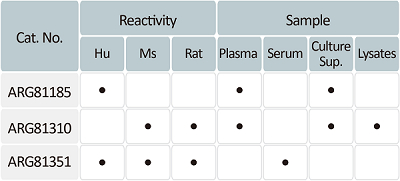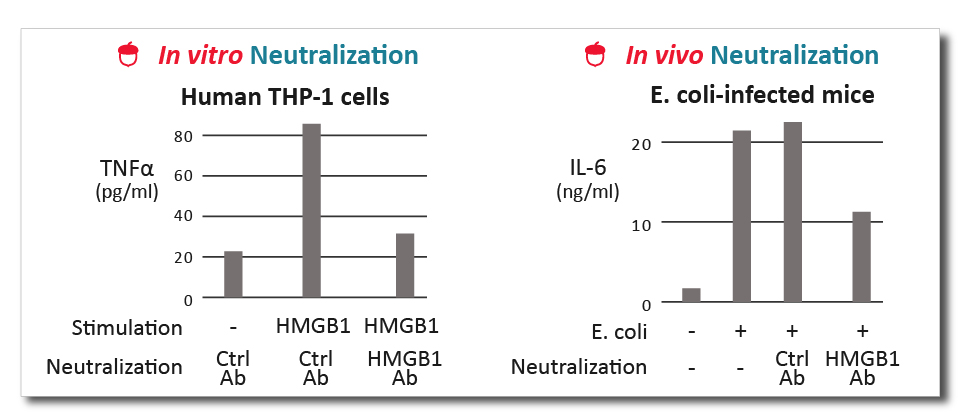Total solutions for HMGB1 research
Total solutions for HMGB1 research

|
HMGB1 is a multifunctional protein with various roles in different cellular compartments. It is associated with various pathogenesis such as cancers, neurodegenerative disorders, and multiple inflammatory diseases. HMGB1 has attracted the attention of both basic and clinical researchers as HMGB1 is a therapeutic target for a wide range of diseases. arigo offers a total solution to facilitate the HMGB1-related research. |
|
● Quantification by HMGB1 ELISA kits ● Stimulation by HMGB1 active protein ● Blocking by HMGB1 Neutralizing antibody ● Detection by HMGB1 antibodies |
|
|
|
Nuclear and cytosolic HMGB1
Extracellular HMGB1 |
-136(1).png)
| ● Stimulation |
|
HMGB1 protein (ARG70220) |
|
| ● Neutralization |
|
HMGB1 Neutralizing antibody |
|
| ● Detection |
|
HMGB1 antibody [SQab1711] (ARG65863) |
|
| ● Quantification |
 |
The most comprehensive HMGB1 ELISA Kits |
|
|
|
Related News |



